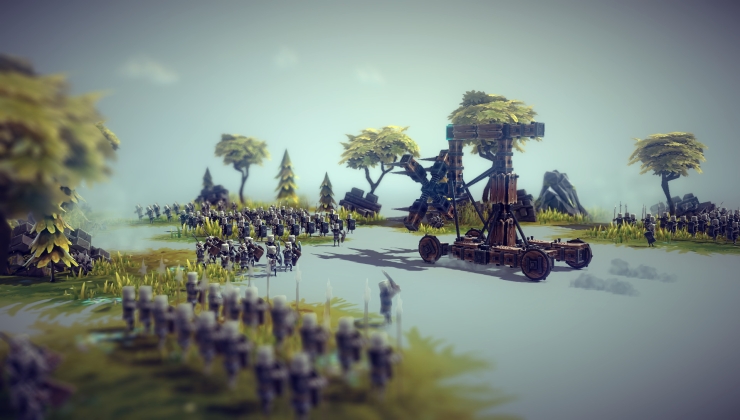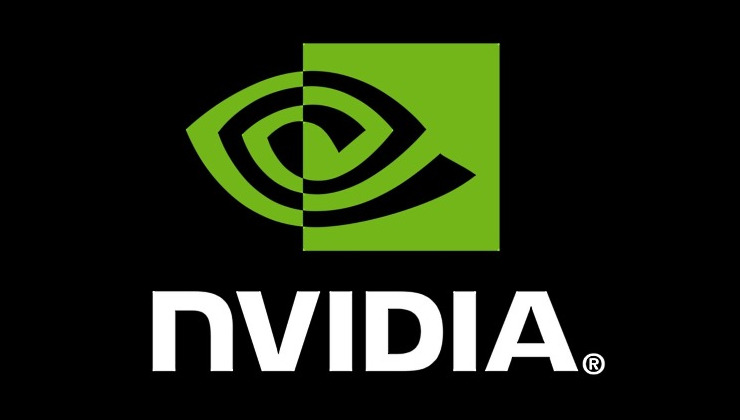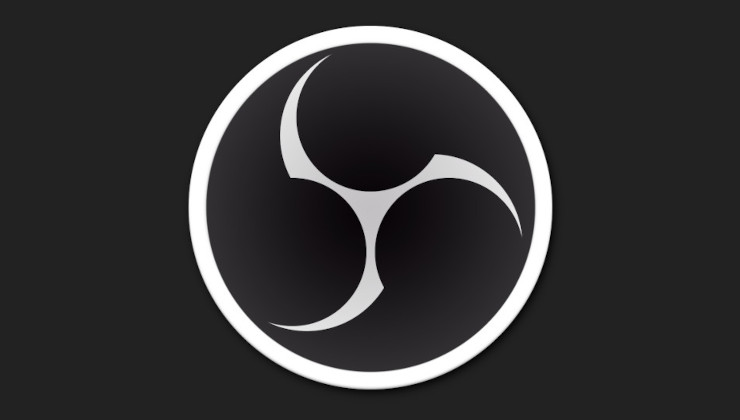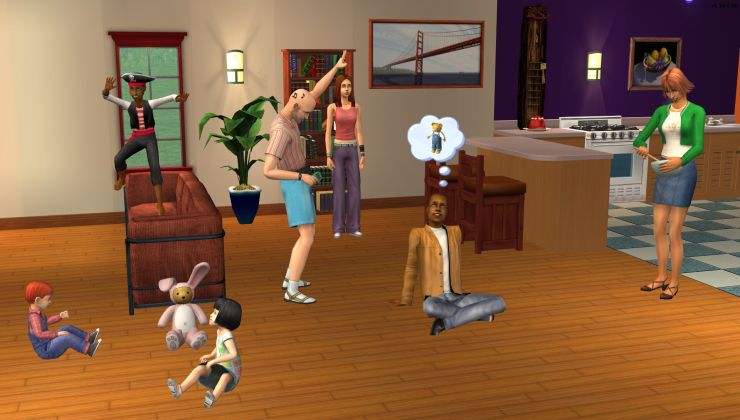Canonical announced some time ago their Steam Snap which was promoted as stable with Ubuntu 23.04, as they continue to push their own packaging format with Snap but it seems this has been causing problems for Valve.
Writing on Mastodon, developer Timothee "TTimo" Besset, who works on various things for Valve posted asking people to consider using the official Valve .deb package or at least consider using the Flatpak:
Valve is seeing an increasing number of bug reports for issues caused by Canonical's repackaging of the Steam client through snap.
The best way to install Steam on Debian and derivative operating systems is to follow the instructions at http://repo.steampowered.com/steam/ and use the official .deb
We are not involved with the snap repackaging. It has a lot of issues.
If you don't want the .deb, please at least consider the flatpak version.
Timothee "TTimo" Besset
So if you've been having various problems with Steam on Ubuntu (or a derivative like Kubuntu), it may be because you've installed it as a Snap. Worth trying out the official .deb or Flatpak to see if it runs better for you. You can also give Canonical feedback in your issues on their Discourse Forum and report issues to Valve on GitHub (if you're using their official packages).
Hopefully Canonical can look into any issues.
Valve posted asking people to consider using the official Valve .deb package
Please, please, please, please not!
I'm reading nearly every thread in the Steam for Linux forum, and we hear problems from people having used the downloadable deb for over a decade now! People should use what their distribution made of it, adding their dependencies and such. I cannot believe Valve proposes to actually use that!
and if their distribution made is shit?
Then try using a good distro?Valve posted asking people to consider using the official Valve .deb package
Please, please, please, please not!
I'm reading nearly every thread in the Steam for Linux forum, and we hear problems from people having used the downloadable deb for over a decade now! People should use what their distribution made of it, adding their dependencies and such. I cannot believe Valve proposes to actually use that!
and if their distribution made is shit?
Source?
Steam only officially supports Ubuntu running Ubuntu 12.04 LTS or newer and SteamOS, but the Steam for Linux community is extremely resourceful and has managed to run Steam on a large variety of distros. Valve approves of these efforts but does not officially endorse or provide support for them.https://partner.steamgames.com/doc/store/application/platforms
Steam has been packaged as a Flatpak app by the Flathub community, but this Flatpak app is not officially supported by Valve...https://github.com/ValveSoftware/steam-runtime/blob/master/doc/steamlinuxruntime-known-issues.md
Steam has been packaged as a Snap app by Canonical, but this Snap app is not officially supported by Valve.
Valve officially only supports one distro and that is the latest Ubuntu LTS - with either Gnome or KDE desktop.They don't support Gnome any more - well, specifically Wayland Gnome; X11 Gnome is OK - because it breaks SteamVR. I can't remember which widget it is that Gnome doesn't provide (I don't use VR and I don't use Gnome) but ISTR that the Gnome devs specifically refuse to support that widget. Someone with more familiarity with the details can fill in the gaps.
Valve officially only supports one distro and that is the latest Ubuntu LTS - with either Gnome or KDE desktop.They don't support Gnome any more - well, specifically Wayland Gnome; X11 Gnome is OK - because it breaks SteamVR. I can't remember which widget it is that Gnome doesn't provide (I don't use VR and I don't use Gnome) but ISTR that the Gnome devs specifically refuse to support that widget. Someone with more familiarity with the details can fill in the gaps.
I would be really interested to know that too. I was kind of surprised the deck doesn't at least support GNOME. I get KDE is more accommodating to Windows users and being friendly to them is obviously a high priority for the deck, but GNOME is so good on a hybrid/tablet style device like that. VR being a priority makes a lot of sense.
Edit: it appears to be this: DRM leasing. They don't refuse, it's just never been complete enough to be merged:
https://gitlab.gnome.org/GNOME/mutter/-/merge_requests/2759
Last edited by mattaraxia on 19 Jan 2024 at 5:59 am UTC
I've lost confidence in PopOS, unfortunately. It looked like a great alternative to Ubuntu until they decided to make their own DE.It really depends on how their 24.04 release goes. Part of the issue had been their mixing of their own repo and Ubuntu's repo. That's not an issue now, and I'd imagine their move towards yearly releases should further help make sure there's more testing.
In addition, the main motivator for Cosmic has been how their Cosmic-Gnome was such a mess of extensions and modifications. So far, the only people who really can maintain customized Gnome with minimum issues has been Ubuntu, and that's only "minimum issues" because the past year's releases has been much better than the year before that.
With them having Factory Reset in GUI and systemd-boot entry (and updated with new ISOs all the time), I think it's a sensible first distro as people play around with it and factory reset it when needed. Time will tell, but I'm pretty optimistic on it.
Valve officially only supports one distro and that is the latest Ubuntu LTS - with either Gnome or KDE desktop.They don't support Gnome any more - well, specifically Wayland Gnome; X11 Gnome is OK - because it breaks SteamVR. I can't remember which widget it is that Gnome doesn't provide (I don't use VR and I don't use Gnome) but ISTR that the Gnome devs specifically refuse to support that widget. Someone with more familiarity with the details can fill in the gaps.
Valve officially only supports one distro and that is the latest Ubuntu LTS - with either Gnome or KDE desktop.Source? Their initial run of SteamOS was debian based, and not Ubuntu based. They include some ubuntu name libraries, and that's about it.
I've literally been installing steam on all my debian systems since it was first added to the repos... about 14 years ago. Never had any issues with it at all. Ubuntu LTS itself only supports their modified gnome install, so there is that.
By the way, Debian's package is now called 'steam-installer' and you can install it with three commands.
sudo dpkg --add-architecture i386
sudo apt update
sudo apt install steam-installer steam-devices
And guess what? The /usr/games/steam file is a script that downloads the very official debian Steam package and installs it.
Funny enough, the Arch version likely does the exact same thing. Which basically means it doesn't really matter what Valve officially supports, people will get it installed, and currently the correct way to get the right dependencies, etc is to NOT use the .deb from their website, but to use your package manager on whichever distribution you choose.
Neither SteamOS 2.0 nor 3.0 was/is meant as a desktop replacement. If you look at the recommended specs on the Steam page for any Valve game they only ever recommend an Ubuntu LTS release.
https://help.steampowered.com/en/faqs/view/1114-3F74-0B8A-B784
Valve officially only supports one distro and that is the latest Ubuntu LTS - with either Gnome or KDE desktop.They don't support Gnome any more - well, specifically Wayland Gnome; X11 Gnome is OK - because it breaks SteamVR. I can't remember which widget it is that Gnome doesn't provide (I don't use VR and I don't use Gnome) but ISTR that the Gnome devs specifically refuse to support that widget. Someone with more familiarity with the details can fill in the gaps.
I would be really interested to know that too. I was kind of surprised the deck doesn't at least support GNOME. I get KDE is more accommodating to Windows users and being friendly to them is obviously a high priority for the deck, but GNOME is so good on a hybrid/tablet style device like that. VR being a priority makes a lot of sense.
Edit: it appears to be this: DRM leasing. They don't refuse, it's just never been complete enough to be merged:
https://gitlab.gnome.org/GNOME/mutter/-/merge_requests/2759
As far as I can see Gnome is supported on Steam for Linux. Why would they put resources into supporting Gnome on Steam Deck? I would guess a majority of the Steam Deck users don't ever use Desktop Mode. Other features like HDR support have higher priority than adding another DE to Desktop Mode.
Last edited by Brokatt on 19 Jan 2024 at 8:21 am UTC
Valve posted asking people to consider using the official Valve .deb package
Please, please, please, please not!
I'm reading nearly every thread in the Steam for Linux forum, and we hear problems from people having used the downloadable deb for over a decade now! People should use what their distribution made of it, adding their dependencies and such. I cannot believe Valve proposes to actually use that!
and if their distribution made is shit?
Then you should not use their distribution. At all.
For Debian, this works all fine though, I tested this several times.
But I understand this is based on my personal experience where I have only seen disadvantages with it.
So far, I have Steam installed from official Debian repository.
I have had nothing but issues with Snaps. I tried them again recently, with a fresh Ubuntu install, and various applications were just outright broken, as always seems to be the case. Flatpaks worked perfectly and they're my go to choice if a binary isn't available.Interesting, I have the opposite experience: I'm actually very glad that snaps are there, because I can install 3rd party software like Spotify, Rider, Pycharm or WPS Office, which either would not be there this easily available (e.g. JetBrains apps would have to be downloaded from their website or their separate repo) or would be calling home, if not sandboxed (looking at you, chinese WPS Office...)
For the past years (approx. from Ubuntu 20.04) I've had exactly 0 issues with snaps, and I'm using them daily...
Hmm, I haven't tested my Index since I swapped to an AMD GPU. I'll have to test it soonish.Valve officially only supports one distro and that is the latest Ubuntu LTS - with either Gnome or KDE desktop.They don't support Gnome any more - well, specifically Wayland Gnome; X11 Gnome is OK - because it breaks SteamVR. I can't remember which widget it is that Gnome doesn't provide (I don't use VR and I don't use Gnome) but ISTR that the Gnome devs specifically refuse to support that widget. Someone with more familiarity with the details can fill in the gaps.
I would be really interested to know that too. I was kind of surprised the deck doesn't at least support GNOME. I get KDE is more accommodating to Windows users and being friendly to them is obviously a high priority for the deck, but GNOME is so good on a hybrid/tablet style device like that. VR being a priority makes a lot of sense.
Edit: it appears to be this: DRM leasing. They don't refuse, it's just never been complete enough to be merged:
https://gitlab.gnome.org/GNOME/mutter/-/merge_requests/2759
I'll have to test it soonish.
Valve officially only supports one distro and that is the latest Ubuntu LTS - with either Gnome or KDE desktop.They don't support Gnome any more - well, specifically Wayland Gnome; X11 Gnome is OK - because it breaks SteamVR. I can't remember which widget it is that Gnome doesn't provide (I don't use VR and I don't use Gnome) but ISTR that the Gnome devs specifically refuse to support that widget. Someone with more familiarity with the details can fill in the gaps.
Valve officially only supports one distro and that is the latest Ubuntu LTS - with either Gnome or KDE desktop.Source? Their initial run of SteamOS was debian based, and not Ubuntu based. They include some ubuntu name libraries, and that's about it.
I've literally been installing steam on all my debian systems since it was first added to the repos... about 14 years ago. Never had any issues with it at all. Ubuntu LTS itself only supports their modified gnome install, so there is that.
By the way, Debian's package is now called 'steam-installer' and you can install it with three commands.
sudo dpkg --add-architecture i386
sudo apt update
sudo apt install steam-installer steam-devices
And guess what? The /usr/games/steam file is a script that downloads the very official debian Steam package and installs it.
Funny enough, the Arch version likely does the exact same thing. Which basically means it doesn't really matter what Valve officially supports, people will get it installed, and currently the correct way to get the right dependencies, etc is to NOT use the .deb from their website, but to use your package manager on whichever distribution you choose.
Neither SteamOS 2.0 nor 3.0 was/is meant as a desktop replacement. If you look at the recommended specs on the Steam page for any Valve game they only ever recommend an Ubuntu LTS release.
https://help.steampowered.com/en/faqs/view/1114-3F74-0B8A-B784
Valve officially only supports one distro and that is the latest Ubuntu LTS - with either Gnome or KDE desktop.They don't support Gnome any more - well, specifically Wayland Gnome; X11 Gnome is OK - because it breaks SteamVR. I can't remember which widget it is that Gnome doesn't provide (I don't use VR and I don't use Gnome) but ISTR that the Gnome devs specifically refuse to support that widget. Someone with more familiarity with the details can fill in the gaps.
I would be really interested to know that too. I was kind of surprised the deck doesn't at least support GNOME. I get KDE is more accommodating to Windows users and being friendly to them is obviously a high priority for the deck, but GNOME is so good on a hybrid/tablet style device like that. VR being a priority makes a lot of sense.
Edit: it appears to be this: DRM leasing. They don't refuse, it's just never been complete enough to be merged:
https://gitlab.gnome.org/GNOME/mutter/-/merge_requests/2759
As far as I can see Gnome is supported on Steam for Linux. Why would they put resources into supporting Gnome on Steam Deck? I would guess a majority of the Steam Deck users don't ever use Desktop Mode. Other features like HDR support have higher priority than adding another DE to Desktop Mode.
The reason is literally right there in the comment you're quoting? You're welcome to disagree with it, you may be right about the usage, but uh, the reason is right there. I literally think it cannot be clearer.
I didn't say it should be a higher priority than other things, just that I've been "kind of surprised" that it wasn't there. The VR support makes sense.
Also isn't HDR there now with the OLED deck? And much of the development was done by not-Valve. I really doubt that they would have to sarcrifice resources for one over the other.
There is (finally) a Wayland HDR spec that people haven't rejected. But it isn't finished. So Valve took the parts of that which work for single-window fullscreen games and implemented it in their own compositor; KDE are using just that bit for single-window fullscreen games in Plasma 6, too. At some point all the finer details of how to handle mixed HDR and non-HDR content in multiple windows will have been worked out and there'll be a full Wayland HDR and colour management spec that the compositors can implement; gamescope, not yet being a Wayland compositor and only being interested in single-window games, doesn't need to bother with any of that.
Valve are absolutely not going to put a second DE on the Deck. They're space-constrained already with two copies of the OS before you even get to games and shader caches that you have to fit into 64 GB. They aren't going to bloat that out for something (choice of desktop environment) that's an anti-feature for the machine's use case. It's getting one, and Valve have already picked it: KDE. While there are several plausible reasons to choose that one - it behaving like a normal desktop rather than Gnome's One True Workflow, the devs being much nicer to work with, and so on - the reason Valve gave for their choice was that it was the DE that Valve staff use and like.Why would they need two copies of the OS (unless you're referring to the fail over?) I know AtariOS does this with their immutable set up for rollbacks.
There is (finally) a Wayland HDR spec that people haven't rejected. But it isn't finished. So Valve took the parts of that which work for single-window fullscreen games and implemented it in their own compositor; KDE are using just that bit for single-window fullscreen games in Plasma 6, too. At some point all the finer details of how to handle mixed HDR and non-HDR content in multiple windows will have been worked out and there'll be a full Wayland HDR and colour management spec that the compositors can implement; gamescope, not yet being a Wayland compositor and only being interested in single-window games, doesn't need to bother with any of that.
Why would they need two copies of the OS (unless you're referring to the fail over?) I know AtariOS does this with their immutable set up for rollbacks.If you already know the answer, why ask the question?
The Deck has one /home partition and two completely independent copies of the OS - the current one and the previous one. Updates overwrite the "previous" version, which then becomes the "current" version, and the former "current" version becomes the "previous" version. The device always has at least one complete OS it can boot into because neither version can affect the other - updates are atomic.
updates are atomic.I worry about fallout.
Debbie Harry's got you covered.updates are atomic.I worry about fallout.
AppImage is just not it: they don't integrate with the system, don't have an automatic update by default and they need to be made executable manually (this is already too much for normal users).
This is not that much of a Canonical or a Ubuntu issue though as this same could happen easily with flatpak.
Flatpak cannot handle CLI and server side stuff for the record but snaps can. That said we have managed to narrow the packaging methods kinda to only 2. Snap and flatpak it is. Kind of like MSI and EXE in Windows world, i suppose.
Probably because I was not 100% sure they did the same thing. I have mostly been trying to see how good the Deck is without mucking with the Linux side much. The OLED versio, I haven't even booted to desktop mode yet!Why would they need two copies of the OS (unless you're referring to the fail over?) I know AtariOS does this with their immutable set up for rollbacks.If you already know the answer, why ask the question?
The Deck has one /home partition and two completely independent copies of the OS - the current one and the previous one. Updates overwrite the "previous" version, which then becomes the "current" version, and the former "current" version becomes the "previous" version. The device always has at least one complete OS it can boot into because neither version can affect the other - updates are atomic.










 How to set, change and reset your SteamOS / Steam Deck desktop sudo password
How to set, change and reset your SteamOS / Steam Deck desktop sudo password How to set up Decky Loader on Steam Deck / SteamOS for easy plugins
How to set up Decky Loader on Steam Deck / SteamOS for easy plugins
See more from me